Common Conditions
COMMON CONDITIONS
SOME OF THE COMMON CONDITIONS WE CAN TREAT

Athlete's Foot
Athlete's foot is a very common skin infection caused by fungus. Signs and symptoms of athlete’s foot involve itching, redness, or peeling of flaky skin. It can infect any part of the foot but most commonly grows in between the toes and around the sole of the foot.
The fungal infection thrives in warm and moist environments, for example, in tight fitting shoes or trainers and can spread via direct contact such as a towel that has come into contact with the fungus.
It is unlikely that athlete's foot will resolve itself without any medication, however topical treatments are extremely effective.
Athlete's foot can be easily diagnosed and treatments can be very effective.

Chillblains
Chillblains are small, itchy, red swellings on the foot that commonly occur during the winter months as a reaction to cold temperatures. They can be quite uncomfortable but rarely cause any permanent damage.
Typically, chilblains cause an itchy, burning sensation and are present several hours after exposure to cold temperatures. They become more prominent after entering a warm environment. The skin often swells and adjusts in colour to red or blue. It is really important not to itch or scratch the skin as this could lead to a break in the skin and an increased risk of infection.
Chilblains are most common with people who smoke, as nicotine constricts the blood vessels, those who have poor circulation or have been diagnosed with raynaud’s.

Bunions
Bunions are created due the joint becoming more prominent at the base of the big toe, this is usually due to the 1st toe changing direction and leaning more towards the 2nd.
Bunions are more commonly found on patients who wear high heels as they exert pressure onto the big toe joint causing the joint to lean further towards the 2nd toe.
However, genetics plays a big role in determining whether or not a bunion will develop as it is due to the way that the bone structures are developed at birth.
If your bunions are extremely painful a podiatrist could refer you to a surgeon, to discuss your options. If we are able to catch a bunion at its earliest stage it is possible to try and limit the affects by providing a range of exercises to ensure the intrinsic muscles are being used.
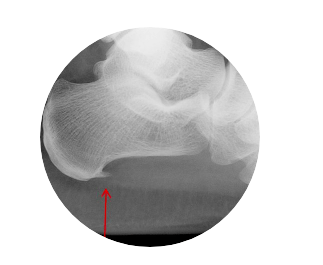
Bursitis
A bursitis is an inflamed sac of fluid which unlike a blister lies deep within the skin. Bursas can occur at multiple sites all over the foot, especially anywhere a shoe would rub, such as the big toe joint, the tops of the toes or the back of the heel.
The treatment of bursas usually requires specific advice regarding footwear and in some instances, patients may benefit from a full biomechanical assessment where insoles may be needed to treat and prevent recurrence.
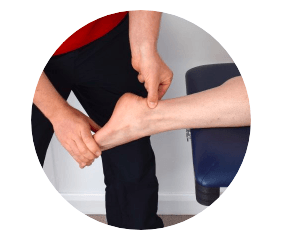
Achilles Tendinitis
Achilles Tendinitis is an inflammation or, arguably, a degeneration of the Achilles tendon. It can manifest with no apparent trigger but typically this condition requires musculoskeletal examination, prescription exercises as well as prescription insoles and footwear advice.
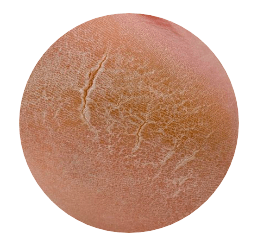
Corns and Callus
Callus (or callosity) is an extended area of thickened, hard skin on the soles of the feet. It is usually symptomatic of an underlying problem such as a bone deformity, inappropriate footwear, or walking style. Some people have a natural tendency to form callus because of their skin type. Elderly people are more likely to form callus on the ball of the foot.
Corns are conical shaped areas of hard skin with the point of the cone deep within the tissue, which causes pain if pressed against a nerve. Corns can develop either on the base of the foot, on or in-between the toes.
Corns are usually developed by wearing shoes that are fitted poorly which can allow the foot to slide and rub, causing a pressure build up of callus.

Flat Feet
Having flat feet means that your feet have low arches or potentially no arches at all, causing your feet to almost completely sit flat on the ground.
Flat feet can be associated with pain in the foot, knee, hip or lower back. Orthotics/insoles can be custom made or bought to alleviate the pain and correct the foot posture to mimic a natural arch of the foot.
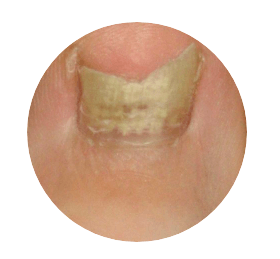
Fungal Nails
Fungal nail infections occur when spores of a fungus make their way between your toenail and the skin underneath (the nail-bed). They then feed off of the skin or the keratin in the nail.
If you acquire a fungal nail infection, you might notice that your nails seem thicker, that they change colour, or that they start to separate from the nail bed.
There are quite a few different treatment options available at Gold Standard Foot Care for fungal nails, depending on the level that the fungal toenail is at.

Hammer Toe
A hammer toe is a deformity that causes the toe to bend or curl under, more ore often than not, affecting the 2nd or 3rd toe. A hammer toe can be present at birth or develop over time due to arthritis.
Depending on the stage of the hammer toe, different treatment options are available.

Heel Pain
Heel pain is extremely common, most heel pain is caused by plantar fasciitis. However, it can also be caused by a stress fracture, tendonitis or arthritis.
Plantar fasciitis is an inflammation of the band of tissue that extends from the heel to the toes.
The most common cause of plantar fasciitis is over excursion. Plantar Fasciitis can also become prominent due to an underlying biomechanical issue such as a high arch. Unsupportive footwear can also be a contributing factor.
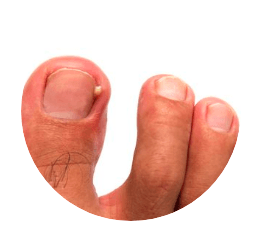
Ingrown Toenail
Ingrowing toe nails occur when the edge of the toenail grows into the surrounding nail tissue. The skin becomes very red, swollen and tender and can sometimes become quite infected. Other symptoms may include pain if pressure is placed on the toe, inflammation of the toe, an overgrowth of skin surrounding the toe known as hypo granulation, bleeding or pus.
Ingrowing toe nails can occur for a number of different reasons such as cutting the toe nail incorrectly, wearing tight fitting shoes, through injury or due to the natural shape of the toe nail.
If it is quite a severe ingrowing toe nail you may require a surgical procedure to remove either part of the nail, or the whole to prevent the ingrowing toe nail from reoccurring. This procedure can be performed at any of our clinics.

Metatarsalgia
Metatarsalgia is the name for pain in the ball of the foot. It affects the metatarsal heads which are the bones connecting the toes to the ankle bone. Metetarsalgia pain can either be felt as burning, shooting sensation or tingling and numbness.
Metatarsalgia can be caused by wearing unsupportive footwear, performing high impact sport, having a narrow, high arches or flat feet.

Morton's Neuroma
Mortons Neuroma is a painful foot condition which is caused by a thickening of the tissue around the nerve between the base of the toes.
You may initially experience a tingling sensation in the space between your toes, This eventually develops into a sharp shooting or burning pain in the ball of your foot or at the base of your toes. There may also be some numbness in your toes.
The pain is often worse when walking or wearing shoes that squash the feet. Some people describe walking with Morton’s neuroma as feeling like there’s a small stones stuck under the foot.

Arthritis
Arthritic changes in the foot are common in both the young and elderly. In younger patients biomechanical assessments, intervention with orthosis and footwear choices can make significant improvements.
Arthritic pain in the foot may be improved with a number of treatments such as; wax foot baths, strapping, footwear advice and insoles.
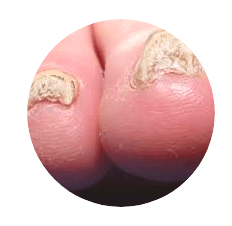
Thickened Nails
Changes in your toenails may be a sign of an underlying condition. Toenails that have grown thicker over time sometimes indicate a fungal infection, also known as onychomycosis. Left untreated, thick toenails can become painful.
Thickened nails can occur as a result of major trauma such as dropping something on the nail or also multiple minor trauma as observed by runners or cyclists.
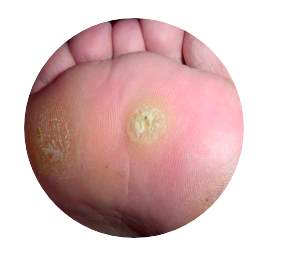
Verrucas
Verrucas are plantar warts that commonly occur on the soles of the feet or around the toe area. They are caused by the Human Papilloma Virus (HPV) which is highly contagious through direct person to person contact.
In the first instance, avoid touching or scratching it as it may spread. In many cases, evidence suggests that verrucas will disappear of their own accord within six months for children and two years plus for adults.
If you are worried about your verruca, self-treatment isn't working or the verruca appears to be getting larger or more painful, please speak to our team.
Additionally, if you have diabetes, poor circulation, are pregnant or have any other condition that affects your feet, it is important to visit one of our podiatrists who can assess the verruca and recommend a suitable treatment plan.

